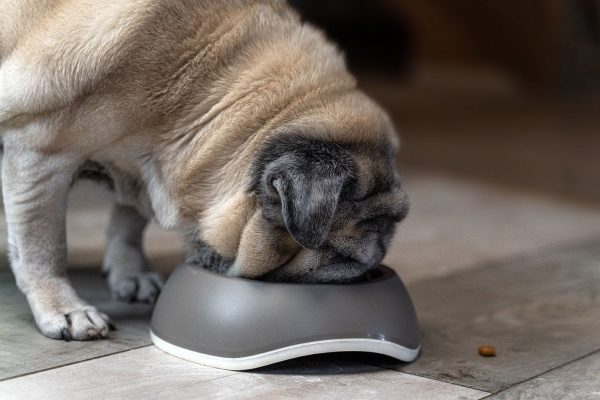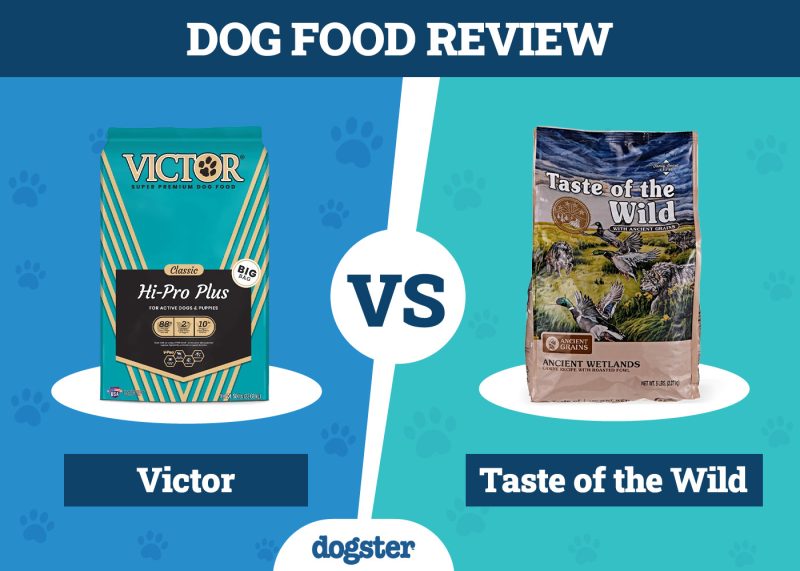In this article
View 5 More +Many of us enjoy hiking, and the same can be said for many of our pups. If you’re taking your dog hiking, you need to be mindful of several potential hazards, such as heat stroke during the summer. But is poison ivy a worry for our pets like it is for us? Is poison ivy toxic to dogs?

What Is Poison Ivy?
Poison ivy is a plant with a bad reputation. After all, it can cause painful and itchy skin lesions in people. You might know it by one of the rhymes used to warm people away from the plant:1
“Leaves of three, let it be.
Hairy vine, no friend of mine.
Berries white, take flight.”
Poison ivy (Toxicodendron radicans) is like poison oak and poison sumac. According to the Pet Poison Helpline, poison ivy is mildly toxic to pets. It can cause skin irritation when pets are exposed to an oil known as urushiol, found in the plant’s sap. The plant can also cause gastrointestinal signs if your dog eats it.
Surprisingly, poison ivy isn’t an ivy. It is a plant that can vary slightly in size and appearance, ranging from acting like a vine to growing upwards like a shrub. The plant has three leaves that alternate where the stems of the leaves attach. It isn’t thorny, but it can look hairy. The plant forms small berries.

What Are the Signs of Poison Ivy in Dogs?
It’s important to understand that most of our dogs have a layer of protection against exposure to poison ivy: their furry coats. As such, poison ivy contact dermatitis is not common in most dog breeds. Certain dog breeds are at a higher risk of exposure to poison ivy because they have little to no coat, such as:
Dogs with poor or thin coats, such as those with color dilute alopecia or seasonal flank alopecia, are also at a higher risk of exposure.
Most dogs have thinner coats on their lower belly, so they’re especially at risk if they walk across the top of the plant and it makes contact with their abdomen.
- Itchy rash occurring several days after exposure to poison ivy
- Red or erythematosus lesions
- Blisters may form that may ooze and spread the rash
- Secondary skin infections
Dogs are usually affected along regions with thinner hair, such as the nose, groin, and lower belly (also called the ventral abdomen). Signs that this type of dog has eaten poison ivy include vomiting and diarrhea.

What Are the Causes of Poison Ivy Contact Dermatitis in Dogs?
When a dog’s skin comes into contact with the clear, liquid sap from poison ivy, they might develop a pruritic or itchy skin rash. The compound triggering this reaction is urushiol. Dogs can become exposed to poison ivy anywhere plants grow in state parks, dog parks, and even your backyard.
A vet will be able to advise you on the best course of action to ensure the well-being of your pet.
Did you know you can speak to a veterinarian without having to travel? Just head over to PangoVet. It's our online service where you can talk to a vet online and get the advice you need for your pet — all at an affordable price!

How Do I Care for a Dog With Poison Ivy?
If you take your dog outside to a place with poison ivy, it’s important to decontaminate them as quickly as possible. If you’re on a hike, wipe your pup down with a towel to get the oils off. Be very careful not to make contact with the oils yourself.
Give your dog a bath at the first opportunity. You should bathe your dog in cool water. A colloidal oatmeal shampoo tends to be recommended to soothe the skin. Experts recommend wearing gloves to reduce the likelihood of you getting exposed to the poison ivy sap.
Wash any clothing or accessories your dog might have been wearing, including her collar and leash. You want to avoid coming into contact with the oils a week or two later and end up dealing with contact dermatitis.
Contact a veterinarian if your dog shows signs of exposure. To control your dog’s clinical signs, the veterinarian will typically offer supportive care, such as anti-nausea medications, steroids, or antihistamines. The veterinarian might also prescribe topical medications like Animax. If your dog develops a secondary bacterial or fungal infection, the veterinarian might treat it with medicated shampoos, oral antibiotics, or antifungals, respectively.
If you or your dog is exposed to aerosolized poison ivy, such as if it is burned, seek medical attention immediately. Pets and people can develop severe signs, such as trouble breathing.

Preventing Poison Ivy Exposure in Dogs
To limit exposure to poison ivy, keep your dog on a leash when hiking. Stick to well-marked trails that are less likely to have poison ivy growing across them. Consider clothing for your dog, such as booties, to protect their paws. A shirt can also provide a layer of protection against poison ivy and similar plants. Just wash these accessories off with gloves and wash them well.

Frequently Asked Questions (FAQ)
Can I get poison ivy from my dog?
Unfortunately, if your dog has been exposed to poison ivy, you could also be exposed to it. The resin or oils linger on the coat unless your dog is bathed right away. If you touch the oils, you might develop contact dermatitis.
Disposable gloves are highly recommended when wiping down your dog or bathing it. If you have potentially been exposed to poison ivy, wash your clothing and hands.
How long can poison ivy remain on my dog’s fur?
The oils with urushiol can last for a long time, potentially weeks or even months. That’s why it’s so important to decontaminate anything you and your dog were wearing or handling.

Conclusion
Poison ivy isn’t the most toxic plant, but it can be pretty inconvenient if your dog is exposed to it. While dogs are less likely than people to develop contact dermatitis from poison ivy, it can still happen. We also need to be mindful and bathe our pets as soon as possible, reducing the risk of exposure to us and our pets.
Featured Image Credit: John P Anderson, Shutterstock


















